Step into the verdant realm of indoor gardening, a world filled with beauty and numerous myths that cloud the truth, affecting both time and wallet for many enthusiasts. This guide aims to dissect and debunk over 23 widespread myths surrounding the care of houseplants. From the intricacies of proper watering techniques to the actual needs concerning sunlight, soil composition, and fertilizer myths, we intend to provide clarity and empowerment for every indoor gardener.
With each myth busted, our mission is to give you the knowledge and confidence needed to nurture your indoor garden more effectively. So, put on your gardening gloves and clear the air together. Get ready to see your botanical companions from a completely different perspective and cultivate your indoor sanctuary with renewed confidence and insight.
Myth 1: Bathrooms are great for plants
The belief that bathrooms are great for plants due to increased humidity during showers or baths doesn’t consider the full picture. After the warm water stops running, the environment becomes less hospitable, with the room’s surfaces designed to dry quickly and often being the coldest in the house. Cold air retains less humidity, making it a less-than-ideal environment for plants that thrive in warm, humid conditions.
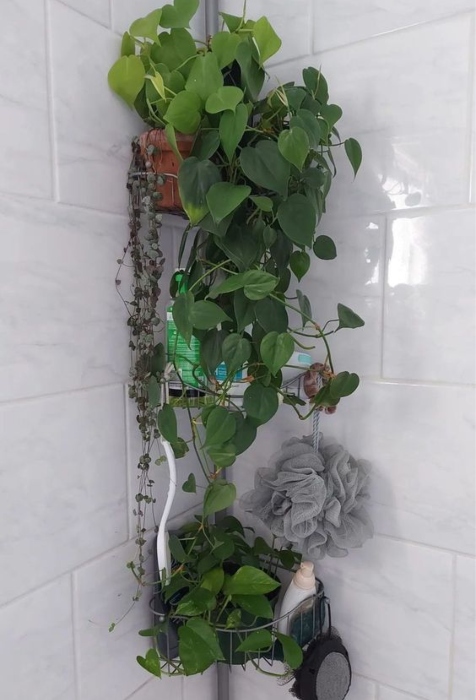
Rather than focusing on temporary conditions, take into account the overall environment your plant experiences throughout the day. Bathrooms may not be the optimal choice for many houseplants after all.
Myth 2: Stick to a Strict Watering Schedule
Adhering to a strict watering schedule may appear to be an organized approach to plant care. Still, it can inadvertently lead to over- or under-watering due to the diverse needs of different plants. The rate at which soil dries depends on numerous factors, including pot size, plant size, temperature, humidity, and light conditions, which can vary significantly over time.
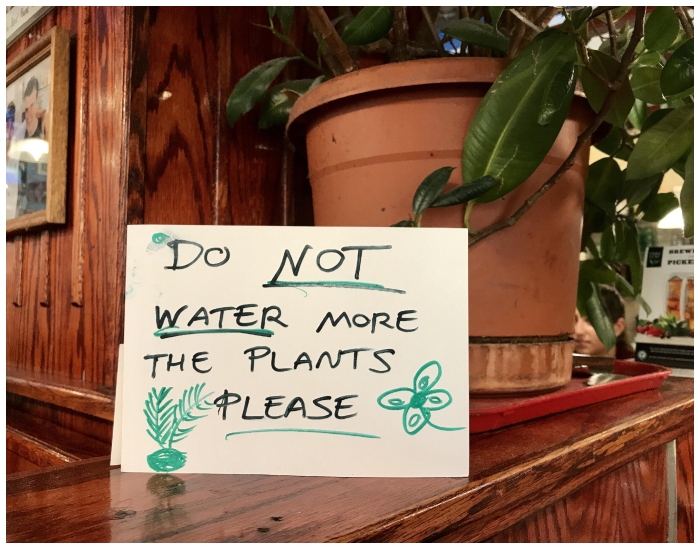
To optimize your plant’s health and avoid potential issues, it’s best to regularly monitor the soil moisture and adjust your watering habits accordingly, providing water only when necessary based on the specific requirements of each plant.
Myth 3: Coffee Grounds Make Great Fertilizers
Embark on a tantalizing exploration of coffee grounds as a fertilizer in the captivating world of plant care! Though these aromatic remnants provide some nutrients, beware of their dark side – they can brew up an acidic environment that doesn’t suit every plant.

Instead, be a plant care alchemist, using coffee grounds sparingly or composting them first to temper the acidity. Transform your plant care rituals with this knowledge and cultivate a thriving, harmonious indoor garden!
Myth 4: Tap Water = Chlorine Overdose
Many believe tap water’s chlorine or chloramine levels can harm plants’ health. This misconception has led to concerns that using tap water for irrigation may expose plants to a chlorine overdose. However, this is far from the truth.
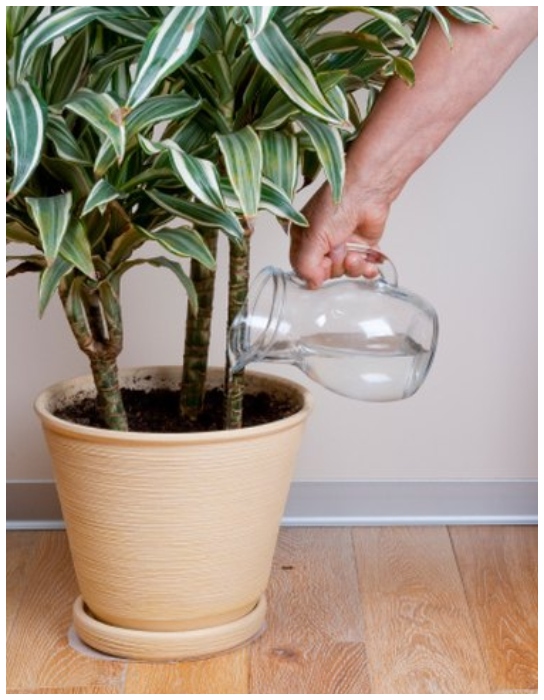
In reality, chlorine is an essential micronutrient that plants require for proper growth and development. While it is true that excessive amounts of chlorine can be harmful, the trace levels found in tap water are usually well within the safe range for most plants. In fact, these small amounts of chlorine can help plants maintain healthy cell structures, contribute to photosynthesis, and assist in osmosis.
Myth 5: Let Water Rest Before Use
The idea that water should be allowed to rest overnight before being used on plants is a common myth based on the assumption that this process helps dissipate potentially harmful substances like chlorine. In reality, this practice is generally unnecessary, as the trace amounts of these substances found in tap water typically do not pose any harm to most plants.
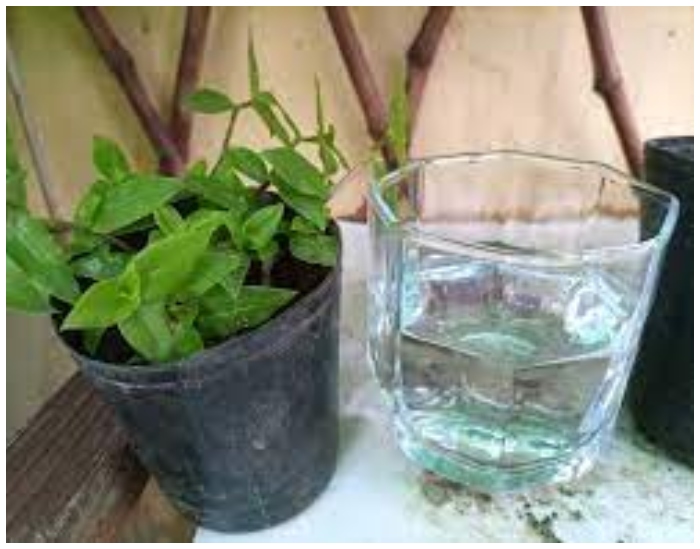
Instead, it’s more crucial to focus on adjusting the water temperature to avoid shocking the plant’s roots; simply let cold tap water sit for a few minutes to reach room temperature before using it for irrigation.
Myth 6: Painting Plant Pots Black Helps Them Retain Heat and Promotes Growth
While it is true that black absorbs heat, painting your pots black can have unintended consequences. Excessive heat absorption can lead to overheating, which can damage plant roots and cause more harm than good.

Maintaining a balanced temperature for your plants is crucial to ensure healthy growth. Instead of painting pots black, choose pots with proper insulation and ventilation features that help regulate temperature. This will create a more stable environment for your plants to thrive.
Myth 7: Wilting Leaves = Thirsty Plant
While wilting leaves are often associated with a plant’s need for water, it is crucial to understand that this is not always the case. In some instances, overwatering can lead to root rot, which in turn causes wilting leaves as the plant struggles to take up necessary nutrients and water.

Therefore, it’s essential to thoroughly assess the plant’s condition and examine other potential factors, such as soil moisture, before deciding on the appropriate action to address the issue.
Myth 8: Succulents Need Just a Drop of Water
Although it’s true that succulents are adapted to thrive in arid environments and generally require less frequent watering than other plants, it’s a myth that they only need a minimal amount of water to survive.
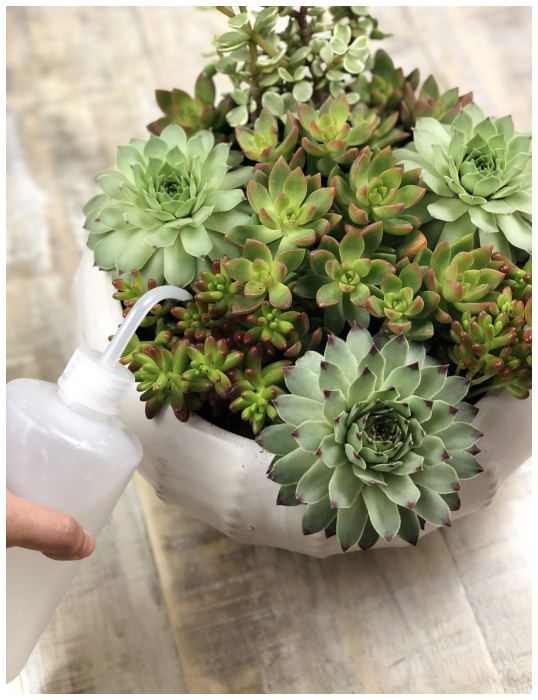
When watering succulents, it’s essential to ensure the soil is thoroughly saturated to provide adequate moisture for the plant’s roots. To maintain optimal health, allow the soil to dry completely between waterings and adjust the duration of the dry period based on factors such as seasonal changes and the plant’s light exposure.
Myth 9: Pruning is Bad for Your Plants
Unearth the truth about pruning and its surprising benefits for your plants! Cast aside the myth that pruning is harmful – it’s vital to your plant’s well-being. Regular trims help sculpt plants, stimulate fresh growth, and prevent disease.
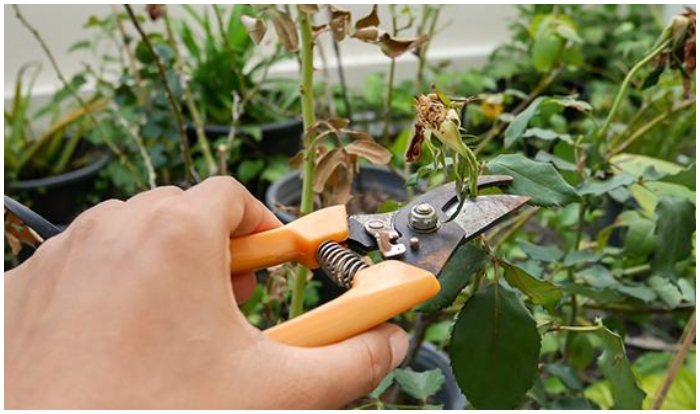
Armed with clean, sharp tools, you’ll be your plant’s best ally when you prune at the right time of year. Embrace the power of pruning and watch your indoor garden thrive with vigor as you sculpt it into a breathtaking botanical masterpiece!
Myth 10: Sick Plants Crave Plant Food
Contrary to popular belief, providing extra plant food or fertilizer to a sick plant is not always the best action, as it can sometimes exacerbate the problem. Over-fertilizing an already stressed plant can lead to further damage or even kill it.
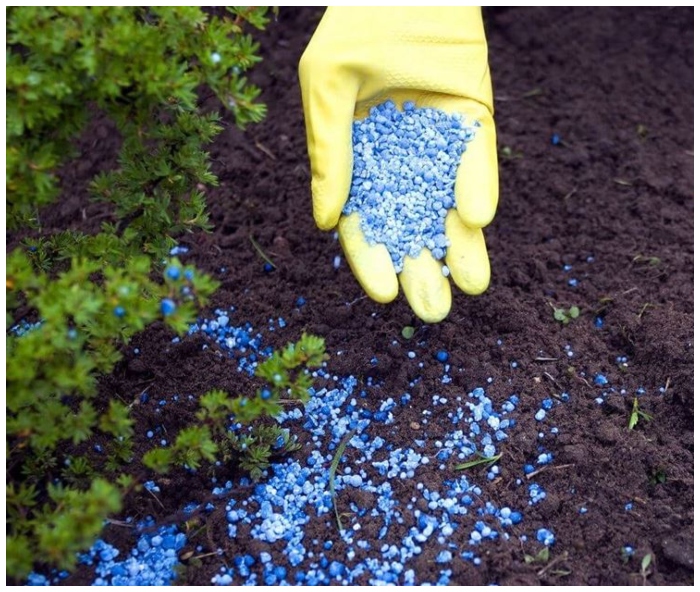
Suppose you notice your plant has stopped growing or appears unhealthy. In that case, it’s essential to pause fertilization efforts, identify and address the underlying issue, and wait until the plant has recovered before resuming plant food or fertilizers.
Myth 11: Bigger Pots Equal Faster Growth
A larger pot doesn’t necessarily mean your plant will grow faster. Plants grow at rates determined by genetics and environmental factors such as light, water, temperature, and nutrients.
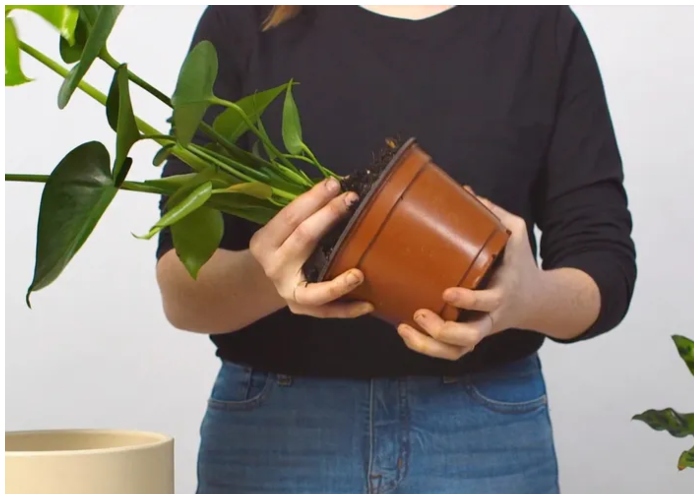
A pot too large for a plant may cause it to allocate more energy to root development instead of above-ground growth. Additionally, excess soil can retain moisture, leading to root rot. Choose the right pot size based on the plant’s size and growth habits.
Myth 12: Houseplants Purify the Air
While it is true that houseplants can remove certain airborne pollutants through photosynthesis, it’s important to recognize that their air-purifying capabilities are pretty limited. In most cases, the amount of pollutants that houseplants can remove from the air is insufficient to affect indoor air quality significantly.
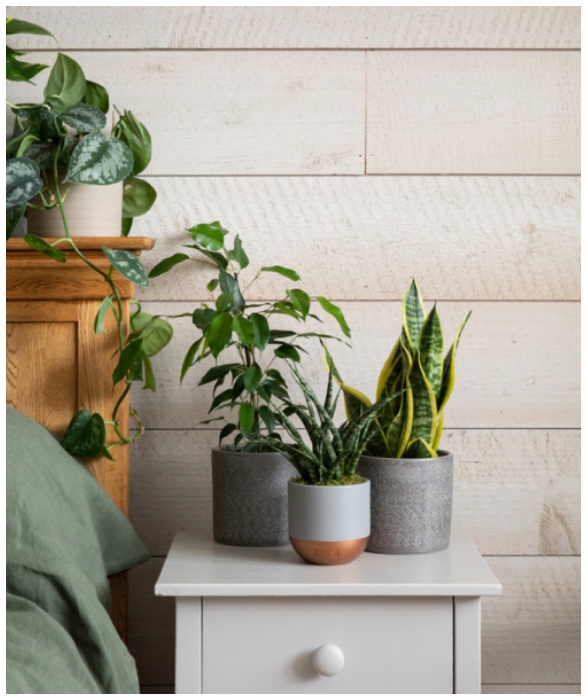
For a more effective solution to improving indoor air, consider using air purifiers, proper ventilation, and regular cleaning to reduce airborne contaminants in your living space.
Myth 13: Keep Plants Out of the Bedroom
Erase your fears and embrace the nocturnal world of bedroom plants! Contrary to the belief that these lush companions should be banished from your sleeping quarters, they pose no harm during the night. Though plants emit minuscule amounts of CO2 as they respire, this tiny release is inconsequential and harmless to humans.

Unleash the potential of these botanical wonders and transform your bedroom into a verdant sanctuary where you can rest easy amidst nature’s calming embrace.
Myth 14: All Houseplants Need Direct Sunlight
Illuminate your understanding of houseplants’ varied light requirements! Forget the myth that all plants crave direct sunlight to flourish. In reality, a kaleidoscope of species thrives under the gentle glow of indirect or filtered light. Dive into the fascinating world of houseplant care and uncover the unique light preferences for each botanical beauty.
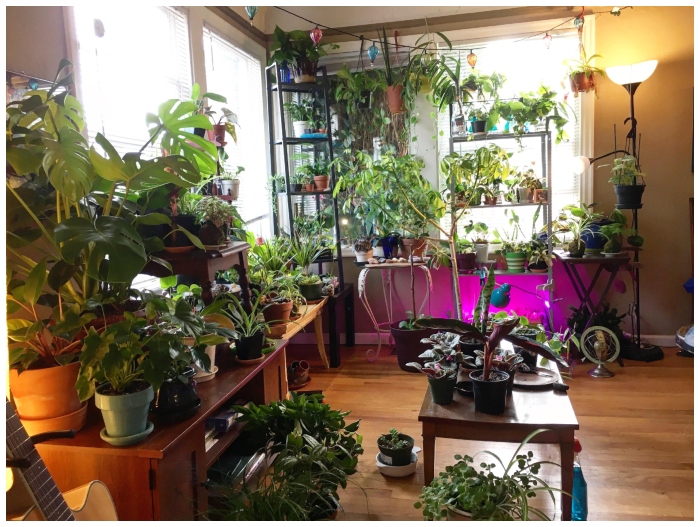
By catering to their distinct needs, you’ll create an enchanting, thriving indoor oasis that celebrates the captivating complexity of the plant kingdom. Let the light shine on the truth about houseplant care!
Myth 15: Yellow Leaves Spell Doom
While it’s true that yellow leaves can sometimes indicate a plant is in distress, they don’t always spell doom for your greenery. In many cases, leaves turning yellow is simply a natural part of the plant’s aging process and should not cause alarm.

To determine whether a problem requires intervention, pay attention to the location of the yellowing leaves and how the discoloration progresses. These factors can provide valuable insights into the underlying issue, if any.
Myth 16: One Fertilizer Fits All
Delve into the enthralling world of plant nutrition and debunk the myth of the one-size-fits-all fertilizer! Each botanical gem has unique nutritional cravings, and a single fertilizer solution may harm their health.

Embark on a discovery journey, learn about your plants’ requirements, and handpick an explicitly crafted fertilizer for their needs. By nourishing your indoor garden with customized care, you’ll witness your plants flourish in vibrant vitality. Celebrate the diversity of plant nutrition and foster a thriving, bespoke ecosystem!
Myth 17: More Stems Mean More Plants
A common misconception in home gardening is that snipping any stem from a houseplant and placing it in soil or water will yield a new plant. This oversimplification can lead to disappointment when new growth fails to emerge. The truth is, successful propagation requires specific conditions and knowledge of the plant’s biology.

Not all stems are equal; for instance, a stem without nodes—crucial points from which leaves or roots can grow—is unlikely to develop into a healthy new plant. Moreover, certain species have particular requirements such as humidity levels, soil type, and seasonality that are essential for propagation. Simply cutting and planting without understanding these needs will not guarantee a new, thriving plant. It’s important for aspiring plant propagators to research and follow species-specific propagation techniques to ensure success.
Myth 18: Removing Brown Leaves Saves Energy
A widespread belief is that cutting off brown leaves from plants will help them save energy for healthier growth. The rationale is that the plant can then redirect its resources to the flourishing parts. However, this isn’t entirely accurate. Leaves turn brown due to stress, damage, or natural aging, and by the time they’ve changed color, the plant has often already reabsorbed the valuable nutrients.

Trimming these leaves does tidy up the appearance but doesn’t necessarily provide a boost to the plant’s health or growth. On the contrary, excessive pruning can stress the plant further. The best approach is to understand the cause of browning—whether it’s due to under-watering, overwatering, or a disease—and address the root of the problem. Healthy plant care involves regular monitoring and precise action based on the plant’s specific needs.
Myth 19: Pesticides are a must
Embark on an exhilarating journey to uncover the truth about pesticides in plant care! Contrary to popular belief, pesticides aren’t a must – they should be a last resort, as they can wreak havoc on beneficial insects and our precious environment. Instead, explore non-toxic alternatives like insecticidal soap or magical neem oil.

Embrace these gentle warriors to safeguard your plants against pesky invaders. Transform your plant care arsenal into an eco-friendly fortress, championing nature’s delicate balance while nurturing your thriving indoor garden!
Myth 20: Bottom Watering Suits Every Plant
Bottom watering, often heralded as a superior method for hydrating houseplants, promises to prevent overwatering and distribute moisture evenly. This approach involves placing the plant in a tray of water, allowing the soil to absorb moisture from below. While beneficial for some plants, particularly those susceptible to fungal diseases from top watering, it’s not a universal solution.

Myth 21: Stones at the Bottom Boost Drainage
Placing stones or pot shards at the bottom of a container is a long-standing gardening myth believed to enhance drainage. However, this technique is ineffective mainly in improving aeration or water flow.

A more efficient approach to enhance drainage and prevent root rot is to mix sand, perlite, or small rocks into the potting soil, which will help create a more porous medium that allows water to flow more freely and prevents waterlogging.
Myth 22: Roots Prefer a Cozy, Compact Space
There’s a persistent myth that plants thrive when their roots are tightly packed within a pot, almost like a cozy hug. The image of hands placing a root-bound plant into a container seems to reinforce this idea. But in reality, roots need room to grow! When roots circle around the pot, they can strangle each other, causing poor growth and even plant death.

Giving plants ample space allows roots to spread out and absorb more nutrients and water, leading to healthier and happier greenery. So when repotting, make sure to choose a sizeable home for your plant’s roots to prevent them from becoming cramped and constrained.
Myth 23: Taping a Plant Fixes Its Growth
The picture shows a plant tied with pieces of tape, suggesting that using tape can correct a plant’s growth or keep it upright. However, this isn’t a good practice for plants. While it might seem like you’re helping by forcibly straightening it, this can actually harm the plant. Taping can restrict natural movement and growth, leading to weaker stems.

Plants need to move freely to grow strong. If your plant is leaning, it might need more sunlight or a sturdier stake for support. Let your plants sway and grow on their own, and they’ll be much tougher for it.
Myth 24: Ice Cubes are a Great Watering Technique
Venture into the chilling myth that ice cubes are a fantastic watering technique for your plants! This frosty approach can harm delicate roots and lead to inconsistent hydration. Instead, unlock the secret to plant care bliss: water your botanical beauties at room temperature, allowing the soil to soak up every precious drop.
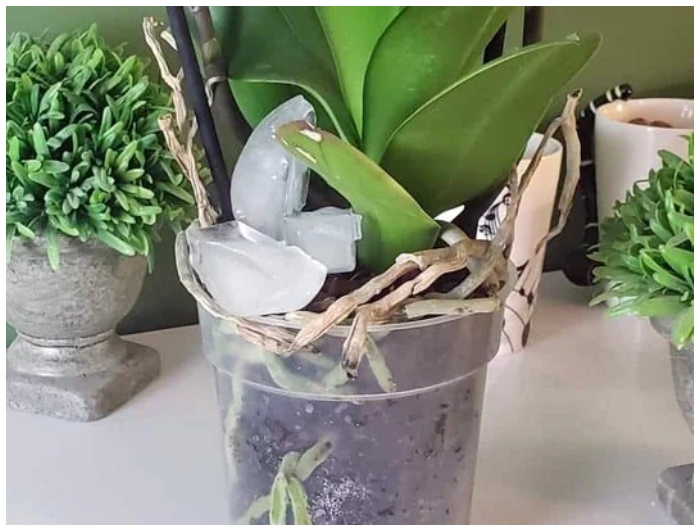
Unravel the truth behind this icy tale and embrace the warmth of proper plant care. Nurture your indoor garden with tender love and attention, and watch your plants bask in the joy of optimal hydration!
Myth 25: Misting Houseplants Increases Humidity
Although the theory behind this myth suggests that misting could reduce transpiration and increase humidity, in practice, a quick spray does not significantly affect humidity levels. According to experts, you would need to mist your plants continually throughout the day to achieve any noticeable impact on humidity.

Instead, consider using a humidifier or grouping plants together to benefit from each other’s transpiration. This way, you can create a more suitable environment for your plants. Remember, your plants should adapt and thrive as long as you maintain proper hydration levels.
Myth 26: If Flowers Don’t Bloom or Leaves Are Curled – Plant Needs Water
This myth is misleading, as various factors, such as insufficient light, lack of nutrients, or improper pruning, can cause plants not to bloom. While it might seem logical that a wilting plant needs water, it’s important not to jump to conclusions. Overwatering is a common issue with houseplants. It could be that your plant is suffering from too much water rather than too little.
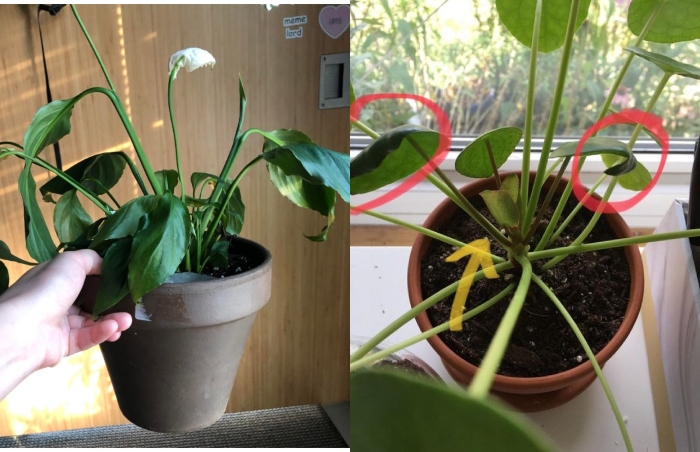
When the soil is oversaturated, the roots cannot absorb oxygen and water, causing the plant to wilt. To avoid this, perform a finger test: if the soil sticks to your finger, hold off on watering for another day and check again. This simple test can help you determine when your plant needs water and prevent overwatering.
Myth 27: Repotting Plants in Winter is Bad Because They Aren’t Actively Growing
This misconception might seem plausible at first, but the reality is that roots never go dormant. Many houseplants are tropical or sub-tropical, meaning they don’t have a specific growing season like other plants.

As long as the plant receives what it needs, it will continue to grow, regardless of the time of year. So, if your plant outgrows its pot during winter, feel free to repot it into a larger container. This way, you can ensure that your plant has the space to develop a healthy root system and continue to thrive.
Myth 28: Cleaning Practices That Harm
A prevalent myth is that shiny-leaved houseplants, like rubber plants, need frequent cleaning with damp cloths to stay healthy. This belief suggests that meticulous wiping of leaves, especially with microfiber or cheesecloth, is essential for dust removal on plants such as Gunnera and Elephant Ears.

Myth 29: Frequent Soil Aeration
A common gardening myth is that frequent soil aeration is crucial for all houseplants to thrive. Many believe that regularly poking holes or loosening the soil around plants ensures better air and water flow, promoting healthier root systems. This advice, though well-intentioned, often overlooks the specific needs of different plant species and can lead to unnecessary stress on the plants.

In reality, while aeration can benefit certain plants, especially those in compacted or poorly draining soils, doing it too often or without considering the plant’s specific needs can cause root damage, disrupt established root systems, and lead to water loss or overwatering issues. Each plant has unique requirements for soil density, moisture levels, and root aeration. Over-aerating can disturb this balance, potentially harming plants more than helping them.
Myth 30: Plant Propagation
A persistent myth in plant propagation is that cuttings must be taken from specific locations to ensure successful growth. This image, indicating ‘leaf node #1’, ‘leaf node #2’, and ‘leaf node #3’, implies that the exact points from which you take cuttings are critical. The reality is more forgiving and nuanced.

While it’s true that cuttings should generally include a node because that’s where new roots are most likely to emerge, the exact node chosen is not as crucial as once believed. The important factor is the presence of a node itself, not its number or precise location on the stem. Each node has the potential to develop roots under the right conditions, and while some may have more stored energy than others, most healthy nodes will suffice for propagation.
Myth 31: Adding Sugar to the Water Boosts Plant Growth
Some people believe that mixing sugar into the water will supply additional energy to the plant, promoting growth. However, this idea is misguided. Plants produce their own sugars through photosynthesis. Adding sugar to the water can have adverse effects, such as promoting the growth of harmful bacteria and fungi in the soil.

To support healthy plant growth, allowing plants to generate their own food and provide them with essential nutrients through a well-balanced potting mix and appropriate fertilizers is better. This approach will ensure your plants receive the necessary nutrients without exposing them to potential harm.
Myth 32: Adding Crushed Eggshells to the Soil Improves Plant Health
Although eggshells contain calcium, an essential nutrient for plants, they decompose very slowly in the soil. They may not provide immediate benefits to your plants. Additionally, calcium deficiencies are not typically an issue for houseplants.

Instead of relying on crushed eggshells, ensure that you use a high-quality potting mix that caters to the specific nutritional needs of your plants. This will provide a more balanced and readily available source of nutrients, supporting overall plant health and growth.
Myth 33: Make Leaves Shine with Mayo
Applying mayonnaise or other similar household products to leaves in an attempt to create a glossy appearance can actually have adverse effects on the plant’s health. Such substances can attract dust, promote the presence of pests, and lead to clogged stomata, which are tiny pores through which plants exchange gases.
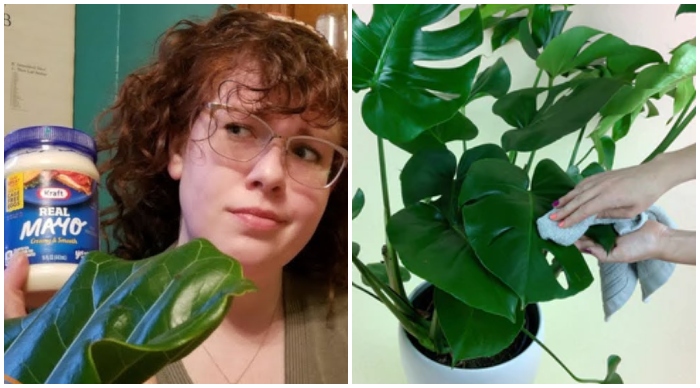
To safely clean and maintain the appearance of your plant’s leaves, opt for a more natural approach by using a soft cotton rag and water to gently wipe away any dirt or dust without causing harm to the plant’s delicate structures.
Myth 34: Using Tea Bags as a Natural Fertilizer for Houseplants
Tea leaves contain some nutrients, but they are not a complete fertilizer. They may not provide all the necessary nutrients for your plants. Moreover, tea bags can attract mold and other pathogens, harming your plants.
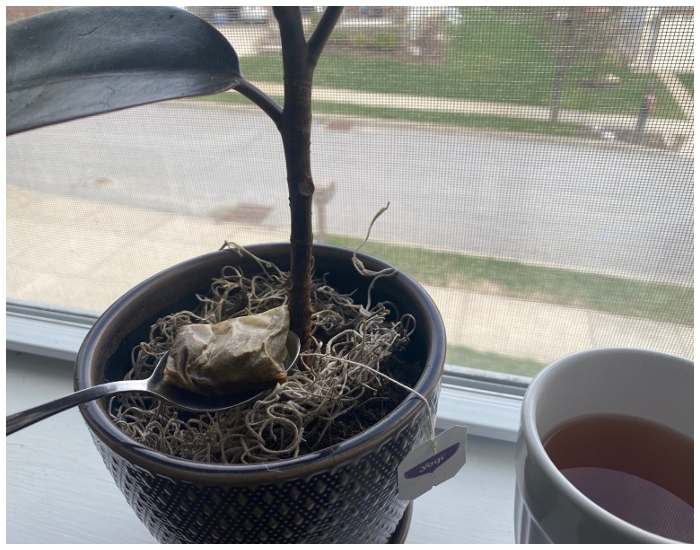
To ensure your plants receive the appropriate nutrients they need, it’s better to use a balanced, slow-release fertilizer or a high-quality potting mix. This approach will provide a more comprehensive and controlled source of nutrients, promoting healthy plant growth.
Myth 35: Sprinkling Cinnamon on the Soil Prevents Pests and Diseases
Cinnamon possesses some antifungal properties, but sprinkling it on the soil is not a foolproof method for preventing pests and diseases in houseplants. The effectiveness of cinnamon as a pest deterrent or disease prevention measure is limited and not guaranteed. Practicing proper plant care is the most effective way to keep your plants healthy.
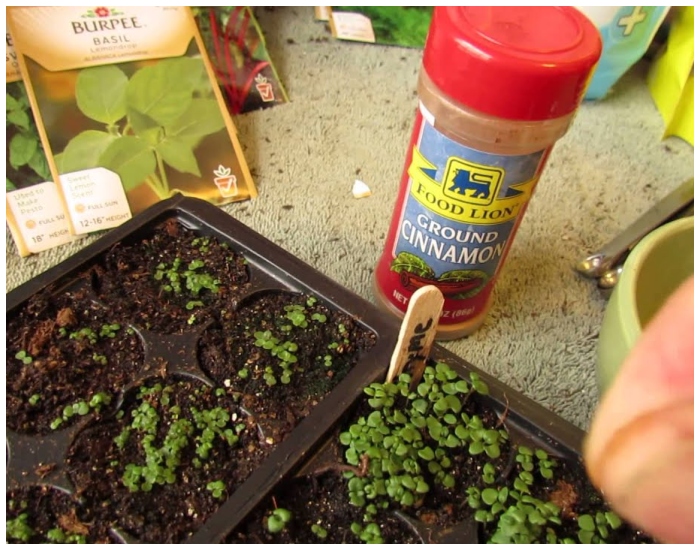
This includes maintaining appropriate watering, light, and humidity levels and using a well-draining soil mix. Creating a healthy environment for your plants reduces the likelihood of pests and diseases taking hold. If you notice signs of pests or diseases, address them promptly using the appropriate treatment methods. Relying on cinnamon alone may not provide the protection your plants need to stay healthy and thrive.
Myth 36: Planting a Rosemary Bush Near Your Front Door Will Ward Off Evil Spirits
Rosemary is an herb associated with protection and remembrance since ancient times. It was believed that rosemary could repel witches, demons, and other malevolent forces that might try to harm or curse the household.

It was also a symbol of loyalty and love. It was often given to guests at weddings and funerals as a token of affection and memory. Planting rosemary near the entrance of your home was a way of inviting good fortune and blessing your family and friends with its aromatic scent.
Myth 37: If You Hang a Bunch of Lavender in Your Bedroom, It Will Help You Sleep Better
Lavender is a flower that has been valued for its soothing and calming properties for centuries. It was used to treat insomnia, anxiety, headaches, and other ailments that could disturb one’s sleep.

It was also believed that lavender could attract love, happiness, and peace into one’s life. Hanging lavender in your bedroom creates a relaxing, romantic atmosphere that promotes restful sleep and sweet dreams.
Myth 38: Plants Boost Oxygen Levels
Discover the little-known truth about houseplants and their role in oxygen production! Although these green marvels perform photosynthesis, releasing vital oxygen, don’t expect them to turn your home into an O2 paradise.
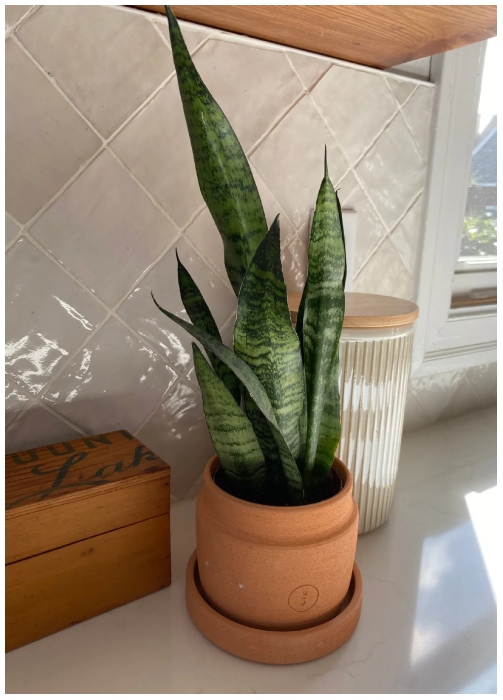
Their output is limited, but that’s not all they bring. Revel in the captivating ambiance and aesthetic charm these verdant gems impart to your living space. Let’s celebrate houseplants for their true purpose – bringing nature’s enchanting beauty indoors!
Myth 39: More Fertilizer = More Growth
Buckle up as we debunk the myth that more fertilizer equals more growth! Beware of over-fertilizing, as this well-intended act can lead to a perilous journey of root burn, mineral buildup, and toxicity. Instead, master the art of moderation by adhering to each plant’s recommended dosage and frequency.
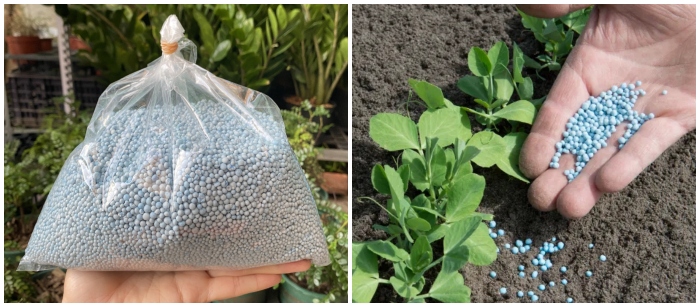
You’ll navigate toward lush, thriving plants by striking the perfect balance. Learn the secret of plant care wisdom – sometimes, less truly is more! Nurture your indoor garden precisely, and witness mindful fertilization’s power.
Myth 40: Pebble Trays (Under the Pot) Raise Humidity
The idea that pebble trays filled with water can increase humidity around plants seems logical, but research has not supported this claim. Experts have found that pebble trays do not have a significant or lasting impact on humidity levels.

Instead of relying on pebble trays, consider using a humidifier or grouping plants together to create a more humid microclimate through mutual transpiration. These methods are more effective at maintaining appropriate humidity levels for your houseplants. They will ensure that they have the environment they need to thrive.
Myth 41: Inserting a nail, clove, or lentil into a plant’s pot can deliver the nutrients that it requires
It’s widely believed that inserting a nail, clove, or lentil into a plant’s pot can deliver the iron and other nutrients that it requires. However, research contradicts this folklore remedy. While these objects won’t harm your plant, they aren’t a reliable source of essential nutrients either. The misconception may lead to neglecting the application of actual fertilizers, which can hamper the plant’s growth.
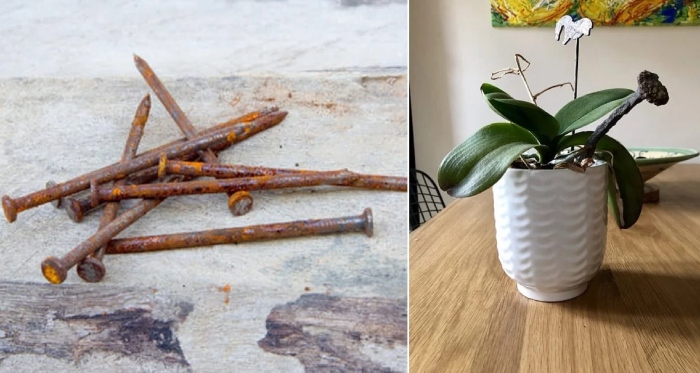
Rather than relying on these unconventional methods, using specific fertilizers and nutrients suitable for your plant is recommended. This practice ensures that your green friend gets all the nutrients it needs, leading to healthier, more vibrant growth.
Myth 42: Cacti bring bad luck due to their sharp and pointed features
A popular belief, often originating from a misunderstood principle of Feng Shui, associates cacti with bad luck due to their sharp and pointed features. However, this notion misinterprets the Feng Shui concept, which doesn’t discourage owning these plants but merely suggests placing them strategically within the home.

Rejecting cacti based on this misconception could rob you of the chance to appreciate their unique and captivating beauty. Unless you’re a staunch follower of Feng Shui, there’s no reason to exclude these prickly yet appealing plants from your living space.
Myth 43: Watering plants at night is most beneficial
There’s a common assumption that watering plants at night is most beneficial. However, this blanket statement doesn’t hold water, as the optimal time for watering largely depends on the specific plant species and prevailing weather conditions.
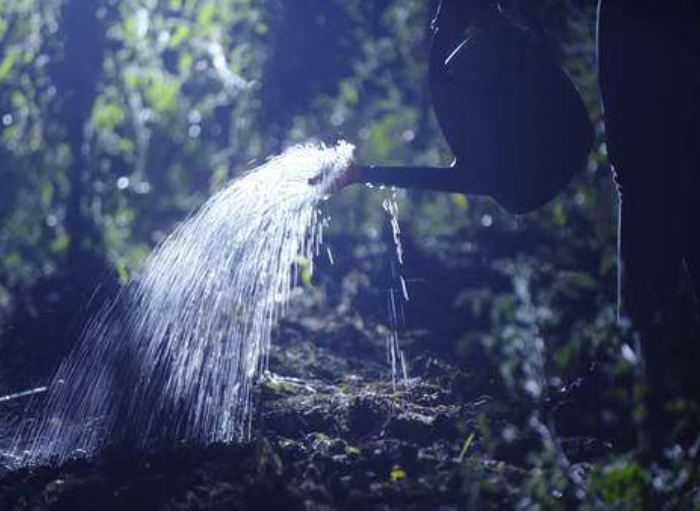
Here’s a simple rule of thumb: During hot weather, it’s better to water plants early in the morning, before the sun gets too harsh. This prevents rapid evaporation and potential leaf burns from sunlight refracted through water droplets. In cooler conditions, opt for daytime watering to avoid potential freezing, which can damage the plant.
Myth 44: You should repot a plant as soon as you bring it home
Many people believe that you should repot a plant as soon as you bring it home. However, it’s healthier to give the plant time to recover from the move and adapt to its new environment. Repot needs to be based on signs of root-bound conditions or slowed growth rather than adhering to a rigid timeline.

Examine your new plant after a few weeks. If you notice the roots growing through the pot’s drainage holes or if the plant’s growth seems stunted, it might be time to consider repotting or root pruning.
Myth 45: Used potting soil is disease-ridden
The common advice is to discard used potting soil, with claims that it’s depleted and disease-ridden. But potting soil, often a mix of peat, coir, or wood-based materials with added amendments like perlite, doesn’t truly ‘age’ or ‘expire.’

Sure, diseases can affect plants, but these pathogens are ubiquitous and will likely invade your new potting soil anyway. Only in severe cases, with hard-to-control diseases, might you need to replace all your plants’ soil. Removing the top layer is usually sufficient if your water is hard and leaves a crust on the soil. Generally, used potting soil can be repurposed for years, with some exceptions, like orchids, which require fresher potting material.
Myth 46: Placing Pebbles at the Top of a Pot Keeps it Hydrated
The commonly held belief that placing pebbles at the top of a pot helps to keep it hydrated has been debunked by horticultural experts. Contrary to popular opinion, adding pebbles does not provide significant benefits to moisture retention in the soil. In fact, the stones can even hinder water absorption by the plant’s roots as they may prevent water from reaching the soil directly.

A more effective approach to maintaining hydration for plants is to use mulch or other organic materials on the surface of the soil. These materials help slow the evaporation process, keeping the soil moist for longer. Furthermore, they also provide essential nutrients to the plants as they decompose over time, contributing to their overall health and growth.
Myth 47: Plants can be toxic to pets
There’s a partial truth to the claim that plants aren’t safe for homes with pets. While some plants can indeed be toxic to pets, it’s incorrect to assume all plants pose a danger or that all pets will attempt to ingest them.

Knowledge is key here: Research the types of plants you’re considering for your home and take appropriate precautions. If necessary, position the plants out of your pets’ reach. Not every toxic plant is a significant threat, and not every pet is interested in sampling your greenery.
Myth 48: Water plants lightly and frequently
Contrary to popular belief, it’s not best to water plants lightly and frequently. Ensuring all parts of the root ball get fully saturated is crucial to plant health. Only lightly watering risks over-saturating the topsoil while the deeper roots remain parched.
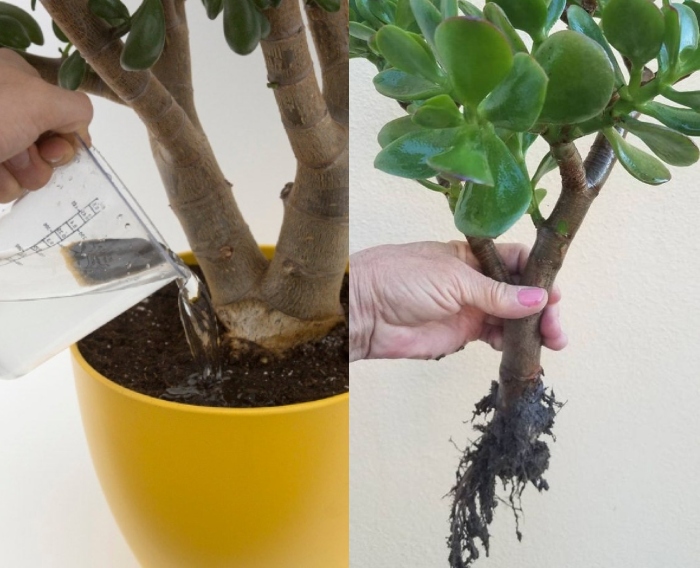
Water your plants slowly and deeply, allowing them to drain thoroughly before watering again. If water seems to drain too quickly, your plant may need to be repotted. Remember to allow the soil to dry somewhat between waterings to prevent overwatering, the frequency of which will depend on the specific plant and the pot’s size.
Myth 49: Leafy houseplants can be co-planted with succulents
The idea that leafy houseplants can be co-planted with cacti and succulents in a terrarium or single container is erroneous. Plants chosen for co-planting should have similar light, soil, and moisture requirements.

For instance, while ferns thrive in moist environments with medium to bright indirect light, cacti and succulents prefer well-drained soil, a dry environment, and lots of light, including some direct sun. Therefore, before co-planting, ensure all chosen plants have similar care needs, or you risk putting one or more plants under undue stress.
Myth 50: Distilled Water Only, Please!
Distilled water is purified, but it’s not always the best choice for your plants. Many houseplants can thrive with tap water, provided it doesn’t contain high levels of alkalinity or sodium.

If your tap water is hard or high in sodium, you can dilute it or use water from a kitchen cold tap that bypasses a water softener. Some plants may benefit from the additional nutrients found in tap water, making it a suitable option.
Myth 51: Fertilizing Houseplants is Always Necessary
Using a nutrient-rich potting mix for your houseplants means adding fertilizer constantly is unnecessary. Plants are also efficient at producing their own food through photosynthesis. Fertilizing can be helpful if you feel your plant needs a boost or the potting mix lacks essential nutrients, but it’s not required for healthy plant growth. Over-fertilizing can be detrimental, causing burned roots or excessive, weak growth.

Before fertilizing your plants, it’s important to understand their specific needs and preferences. Some plants may benefit from a slow-release fertilizer, while others may require a more diluted liquid fertilizer. By being mindful of your plant’s needs and the nutrients in the potting mix, you can make better decisions about whether and when to fertilize.
Myth 52: Placing a Penny in the Soil Prevents Fungus Gnats
The theory behind this myth is that the copper content in the penny will act as a deterrent against fungus gnats and other pests. However, the small amount of copper in a penny is insufficient to significantly impact these insects. Proper plant care is a more practical approach to dealing with fungus gnats and other pests.

This includes avoiding overwatering, using a well-draining soil mix, and promptly addressing pest issues with appropriate treatments. By focusing on good plant care habits, you can create an environment less conducive to pest infestations.
Myth 53: Some Houseplants Can Survive Without Any Light
All plants, including those labeled as “low light” plants, require at least some light to survive and grow. Low-light plants like snake plants and ZZ plants can tolerate lower light levels but will still need some light to thrive. No plant can survive in complete darkness, such as in a windowless room.

If your living space is dim or lacks natural light, consider using an LED grow light to provide the necessary light for your plants. This supplemental light source will help ensure that your houseplants receive the energy they need for photosynthesis and can continue to grow and thrive, even in less-than-ideal lighting conditions.